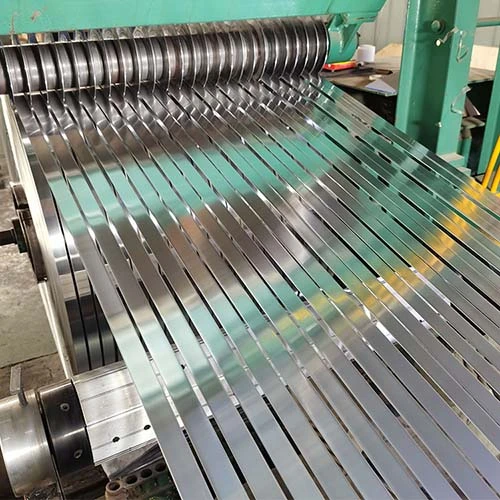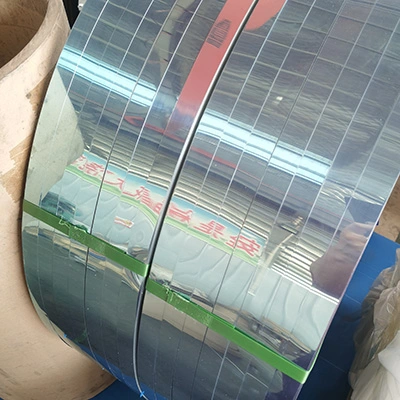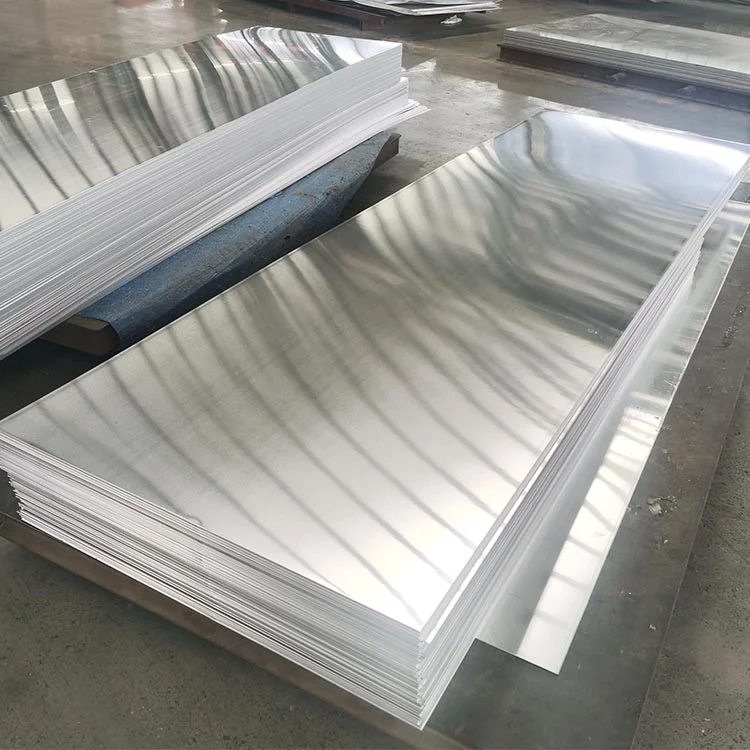
Aluminum strips for channel letters are commonly made of 1000 series aluminum alloys, which have good corrosion resistance and formability. When making channel letters, you first need to cut the aluminum strip into the required shape and size according to the design requirements. The aluminum strip is then fixed to the frame or outline of the channel letters, usually using glue, screws or welding. Finally, a light source (usually an LED light) needs to be installed to provide a light effect. The light source is installed inside or on the back of the channel letters and transmits light through transparent or translucent materials, making the borders or outlines of the channel letters shine brightly at night or in low-light environments. Yongsheng’s aluminum strips for channel letters can provide advantages such as being lightweight, durable, easy to process, and good in heat dissipation. We also supply aluminum strips with various treatments such as color coating, mirror surface, which can be used to make channel letters and achieve various attractive effects and performance!
Get to Know Aluminum Strips for Channel Letter:
Aluminum alloy strips for channel letter strips are commonly used in commercial advertisements, shopping mall signs, hotel signs, street signs and other places. Typically, the thickness of channel letter strips ranges from 0.4 mm to 1.0 mm. The specific thickness selection depends on the size of the letter strip, structural requirements and manufacturing process. Larger letter sizes may require thicker aluminum strips to provide adequate structural strength. The width chosen should match the design and size of the channel letters to achieve the desired appearance.

Commonly Used Grades Are:
3003 aluminum strip:
This is a common material for 3000 series aluminum alloys and has good corrosion resistance and formability. According to actual test data, the tensile strength of 3003 aluminum strip can reach 120MPa and the yield strength is 95MPa. This allows it to provide sufficient structural strength and stability when making channel letterforms.
5052 aluminum strip:
5052 aluminum strips have higher strength and corrosion resistance and are suitable for luminous character projects under various environmental conditions. According to reliable test data, the tensile strength of 5052 aluminum strips can reach 215 MPa and the yield strength is 160 MPa. This gives it excellent performance in the production of illuminated characters on seaside or industrial areas.
6061 aluminum strip:
6000 aluminum strips have an excellent strength-to-weight ratio and are suitable for large-scale illuminated character projects. According to actual data, the tensile strength of 6061 aluminum strip in the 6000 aluminum alloy series can reach 275 MPa and the yield strength is 240 MPa. This makes it excellent at producing larger-sized luminous characters and able to meet bending and forming requirements. The 6063 aluminum alloy of the same series is usually used to make the frames and outlines of luminous characters. 6063 aluminum strip has moderate strength and rigidity, as well as good surface treatment properties, and can be anodized to provide a smooth and bright appearance.
Why Choose Aluminum Strips For Channel Letter?
- Lightweight and high strength: Compared with other metal materials, such as steel, aluminum strips are lighter in weight and are easier to hang, install and transport. At the same time, aluminum alloy materials also perform well in terms of strength and can provide sufficient support and stability to ensure that the structure of the luminous characters is solid.
- Corrosion resistance: Aluminum strips have good corrosion resistance, can be used in various climate conditions, and are not easily affected by the external environment and rust. This allows the channel letters to maintain a long life and good appearance for both indoor and outdoor use.
- Good processing performance: Aluminum strips are easy to process and shape, and luminous letter strips of various shapes can be made according to design requirements. It can perform cutting, punching, bending and other operations to meet the needs of different projects, and has high precision and plasticity.
- Excellent thermal conductivity: Aluminum strips have good thermal conductivity, which can effectively conduct the heat generated by the light-emitting elements, maintain heat dissipation balance, and improve the stability and service life of the luminous characters.
- Affordable: Alloy aluminum strips are relatively cheap to produce and have low processing costs. Aluminum is one of the most abundant metals on Earth, with a wide range of applications and supply chains. This makes aluminum strip an economical choice for making channel letter strips.
Factors To Choose Aluminum Strips For Channel Letter:
Thickness and width specifications:
Determining the proper thickness and width of the aluminum strip is critical to achieving the structural integrity and visual impact required for the channel lettering. Factors such as letter size, installation method and environmental conditions should be considered when determining the optimal thickness and width.
Alloy Type and Grade:
Aluminum strips come in a variety of alloy types and grades, each with their own unique properties and characteristics.
Understanding the different alloy options and choosing the right grade ensures that the aluminum strip chosen meets the specific requirements of your channel letter project.
Surface Treatment and Coating Options:
The surface finish and coating of the aluminum strip contribute to the aesthetics, durability and weather resistance of the channel letters. Depending on the desired appearance and environmental conditions, anodized finishes, powder coatings, painted finishes, polished finishes and brushed/textured finishes are popular choices.
Color and Beauty:
Choosing the right colors for your channel letter sign is essential to effectively communicate your brand image and attract attention. Consider the color options available and how they align with your brand aesthetic and design intent. Ensure color consistency and fade resistance to maintain the visual appeal of illuminated letters over time.
Durability and Weather Resistance:
Channel lettering can be affected by a variety of environmental factors, including sunlight, rain, wind and temperature fluctuations. Choose aluminum strips with high durability and excellent weather resistance that can withstand these conditions without compromising their structural integrity or appearance.
Application and Installation Requirements:
Consider the manufacturing techniques involved in creating channel letters and ensure that the aluminum strip chosen is compatible with these techniques. Evaluate the aluminum strip’s ability to bend and form to obtain the desired letter shape.
Evaluate decorative covers for compatibility and ease of operation and installation to simplify the installation process.
Cost and Budget Considerations:
Cost is an important factor to consider when choosing channel-shaped aluminum strips. Evaluate the price factors associated with different aluminum strip options and strike a balance between quality and affordability. Additionally, consider the long-term cost implications of choosing durable and weather-resistant aluminum strips that require minimal maintenance and replacement.
Learn About Aluminum Strip Specifications:
In order to make an informed decision, it is important to become familiar with common aluminum strip specifications. These specifications include: Common thicknesses of aluminum tape for channel letters: Aluminum tape used for channel letters comes in a variety of thicknesses, typically ranging from 0.040 inches to 0.125 inches. Thickness selection depends on factors such as letter size, wind load requirements and manufacturing techniques.
Standard width and length:
Aluminum strips are available in standard widths and lengths and can be customized to meet specific project requirements. Standard widths are typically 1 inch to 8 inches, while lengths can be up to 20 feet or more.
Tolerance and Precision Requirements:
Precision and tolerance requirements are important considerations, especially in large-scale channel letter projects.
Verify the tolerance levels offered by the aluminum strip supplier to ensure the desired level of precision in fabrication.
Customization Options:
Some projects may require customized aluminum strip specifications, such as non-standard widths, lengths, or thicknesses.
Discuss customization options with suppliers to accommodate unique project requirements.
Choosing the Right Alloy Type and Grade:
Aluminum strips are available in various alloy types and grades, each offering distinct properties and benefits. Consider the following aspects when selecting the right alloy type and grade:
Characteristics of Commonly Used Alloy Grades:
3003 aluminum strips are known for their excellent corrosion resistance and formability, making them suitable for outdoor applications. 5052 aluminum strips offer higher strength and better resistance to harsh environments, making them ideal for channel letters in coastal or industrial areas. 6061 aluminum strips provide excellent strength-to-weight ratio and are often used in larger channel letter projects.
Corrosion Resistance and Longevity:
Consider the environmental conditions your channel letters will be exposed to and choose aluminum strips with appropriate corrosion resistance properties. Anodized finishes or protective coatings can further enhance the longevity and corrosion resistance of the chosen alloy.
Strength and Flexibility:
Evaluate the strength requirements of your channel letters, especially for larger or more complex designs. Consider the flexibility of the chosen alloy to facilitate bending and forming during fabrication.
Exploring Surface Finish and Coating Options:
The surface finish and coating of aluminum strips significantly impact the appearance, durability, and weather resistance of channel letters. Explore the following options:
Anodized Finishes:
Anodizing is an electrochemical process that creates a protective oxide layer on the surface of aluminum strips.
Anodized aluminum strips offer enhanced corrosion resistance, durability, and color stability while retaining the natural metallic appearance.
Powder Coating:
Powder coating involves applying a dry powder to the aluminum strip’s surface, which is then cured to form a durable and attractive finish. Powder coatings provide excellent color options, resistance to chipping and fading, and enhanced weather resistance.
Color-coated Finishes:
Color-coated finishes involve applying liquid paint to the surface of aluminum strips. Color-coated aluminum strips offer a wide range of color choices and can be customized to match specific branding requirements. Proper surface preparation and high-quality paint systems are essential to ensure long-lasting performance.

Polished Finishes:

Polished mirror aluminum strips involve mechanically polishing the surface of aluminum strips to achieve a reflective and glossy appearance. Mirror aluminum strips are aesthetically pleasing but may require regular maintenance to retain their shine.


